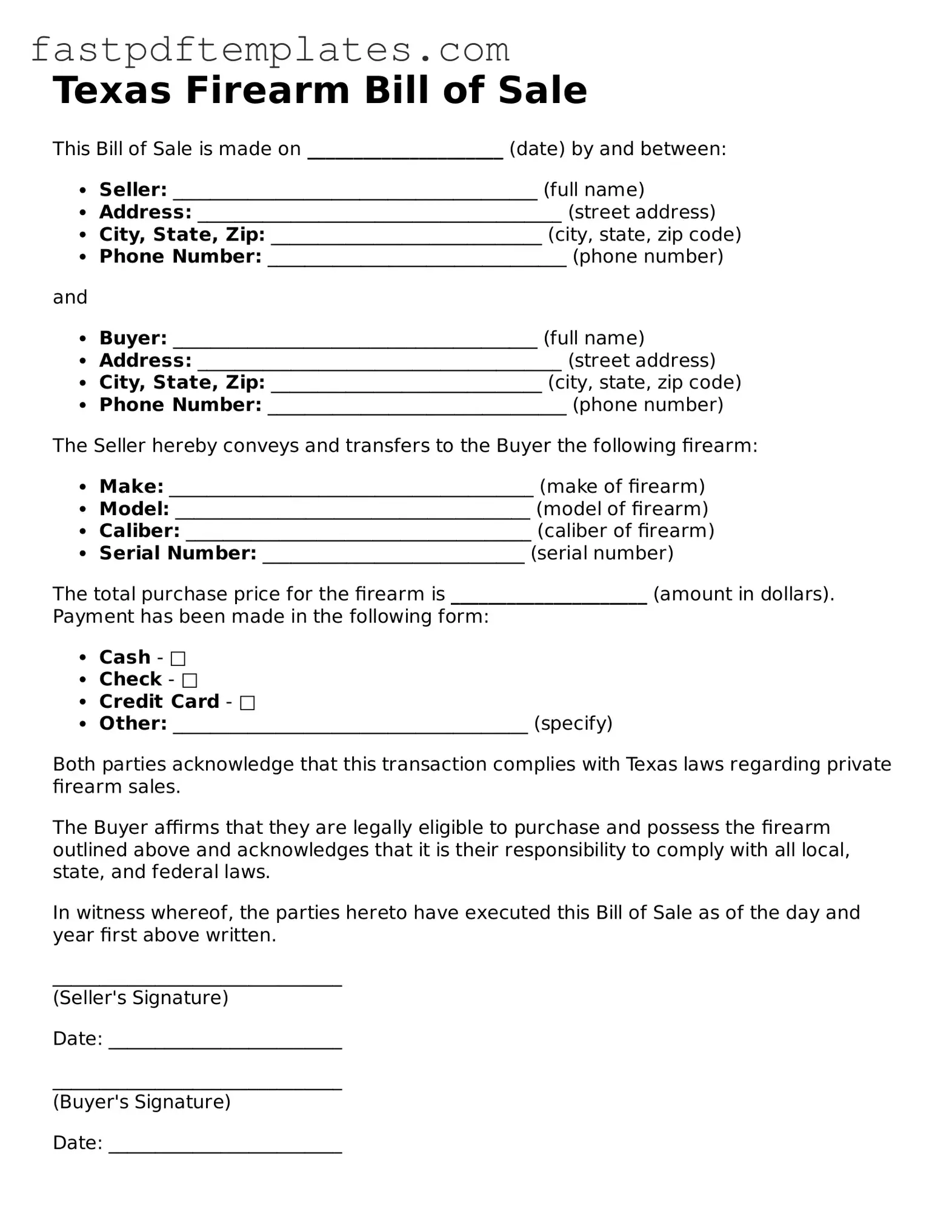Texas Firearm Bill of Sale
This Bill of Sale is made on _____________________ (date) by and between:
- Seller: _______________________________________ (full name)
- Address: _______________________________________ (street address)
- City, State, Zip: _____________________________ (city, state, zip code)
- Phone Number: ________________________________ (phone number)
and
- Buyer: _______________________________________ (full name)
- Address: _______________________________________ (street address)
- City, State, Zip: _____________________________ (city, state, zip code)
- Phone Number: ________________________________ (phone number)
The Seller hereby conveys and transfers to the Buyer the following firearm:
- Make: _______________________________________ (make of firearm)
- Model: ______________________________________ (model of firearm)
- Caliber: _____________________________________ (caliber of firearm)
- Serial Number: ____________________________ (serial number)
The total purchase price for the firearm is _____________________ (amount in dollars). Payment has been made in the following form:
- Cash - □
- Check - □
- Credit Card - □
- Other: ______________________________________ (specify)
Both parties acknowledge that this transaction complies with Texas laws regarding private firearm sales.
The Buyer affirms that they are legally eligible to purchase and possess the firearm outlined above and acknowledges that it is their responsibility to comply with all local, state, and federal laws.
In witness whereof, the parties hereto have executed this Bill of Sale as of the day and year first above written.
_______________________________
(Seller's Signature)
Date: _________________________
_______________________________
(Buyer's Signature)
Date: _________________________
This document serves as a record of the sale and should be retained by both parties.
